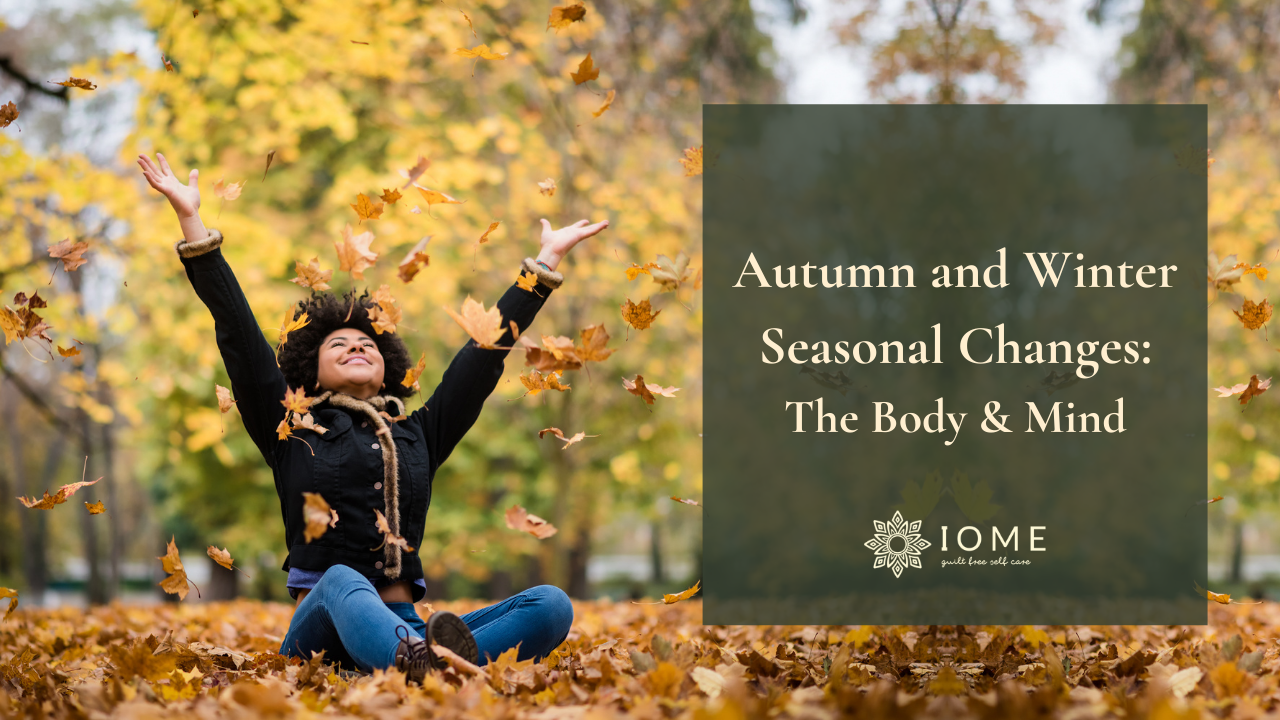Autumn and Winter Seasonal Changes: The Body and Mind

The air begins to get cooler in the mornings, it gets darker in the evenings just past dinner time, and before you know it daylight savings time is here and gone and we enter the darkness of winter. Along with the leaves changing, flowers and grass becoming dormant and our bodies undergo multiple changes with the seasons, some are more noticeable than others. As for the body, your blood pressure can rise in the cooler temperatures of fall and winter because of the constriction of the vessels in response to the cold temperatures. You might have an increase in migraine headaches, due to decreased blood flow to your brain. Respiratory conditions like Asthma and COPD are exacerbated in the cooler months. Cholesterol levels can rise which can lead to Vitamin D deficiency, there is an increase in your bodies inflammation to fight off cold and Flu symptoms.
Tangible tips for the body for the fall and winter
- Increase sleep, your body needs more during the fall and winter months
- Review workout/movement routine and change if needed to something of a slower pace
- Eat seasonally
Have you ever noticed an increase in worry or concern around the start of the school year or end of summer? The concept of Autumn Anxiety is an increase in Anxiety during the fall months thought to be potentially due to the combination of end of summer, start of the school year, and the looming holiday season. This type of Anxiety is often reoccurring every year at the same time, with no other external triggers. Brene Brown likes to call this time “go time” and compares it to the time to start resolutions and follow through with goals instead of the new year timeframe, aligning with the fall season and time of change and growth.
Seasonal Affective Disorder, or “SAD” as it is known, usually last for around
4-5 months and begins in late fall for the winter pattern seasonal affective
disorder. Millions are affected by this form of Depression, and it typically runs in families, begins in early adulthood, and is more common in women. Symptoms of the Winter pattern SAD can include oversleeping, social withdrawal, and overeating. There is a summer pattern SAD which can include symptoms of anxiety, insomnia, and episodes of irritability and violent behavior. Typically, the treatment for SAD can range from talk therapy, antidepressants, light therapy, and Vitamin D therapy.
Tangible tips for the mind for the fall and winter
- Try something new
- Get social
- Get daily sunlight
- Get moving
- Try reframing your thoughts
If you find you are struggling with the seasonal changes, please reach out to one of IOME's Trained Supporters. Click HERE to schedule a free phone consultation with Becky, the founder!
Please reach out to me at [email protected] for further questions or feedback.
Together we are better,
Rachel
